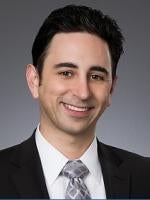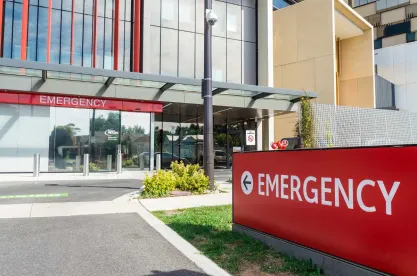Summary: California lawmakers have greenlighted emergency loans to support struggling hospitals facing financial challenges across the state. These loans will serve as a critical lifeline, helping eligible hospitals stabilize operations and navigate through turbulent times. Assembly Bill 112, passed by the California Senate and Assembly and expected to be signed by California Governor Gavin Newsom, establishes the Distressed Hospital Loan Program and the Distressed Hospital Loan Program Fund, which are designed to provide interest-free cashflow loans to not-for-profit hospitals, public hospitals in significant financial distress, and governmental entities representing a closed hospital (i.e., a hospital that closed after January 1, 2022). Understanding the qualifications and limitations outlined in the proposed legislation, including loan repayment terms and loan forgiveness options, is crucial for potential hospital participants.
In-Depth: Healthcare institutions have been facing a variety of challenges, from rising costs, reimbursement cuts, and the ongoing impact of the COVID-19 pandemic. According to a report prepared for the California Hospital Association, these hardships have created an immense strain on California hospitals, with 1 in 5 hospitals at risk of closure. Last week, California lawmakers took a critical step by approving the Distressed Hospital Loan Program to address the severe financial struggles faced by many hospitals throughout the state.
On Thursday May 4, 2023, Assembly Bill 112 (“AB 112”) passed the California Assembly with a vote of 77-0 and the California Senate with a vote of 38-0. It currently awaits the signature of Governor Newsom. The legislation creates the Distressed Hospital Loan Program, which will allow not-for-profit hospitals, public hospitals in significant financial distress, and governmental entities representing a closed hospital to apply for and, if qualified, receive interest-free cashflow loans.
Programs like this may be crucial to keeping eligible hospitals from bankruptcy or closure. Sheppard Mullin’s nationally recognized restructuring and healthcare teams are currently advising Beverly Community Hospital through the bankruptcy process – and fighting to keep the hospital open to serve its underrepresented service area. Sen. Bob Archuleta, a Cerritos Democrat whose district includes Montebello, acknowledged on the Senate floor – “[AB 112], this money, will keep [Beverly Hospital] open long enough to be able to perhaps sell, regroup, whatever, but they will keep their doors open.”
The Distressed Hospital Loan Program will be administered by the Department of Health Care Access and Information (“DHCAI”). DHCAI is required to develop a methodology to evaluate the potential eligibility of at-risk hospitals for Distressed Hospital Loan Program loans. The Distressed Hospital Loan Program is set to run until January 1, 2032.
The State legislature has authorized the Department of Finance to fund the Distressed Hospital Loan Program with up to $150,000,000 from the State General Fund for State fiscal years 2022–23 and 2023–24.
The following are Distressed Hospital Loan Program qualifications and limitations:
-
Eligibility: The applicant must be a public hospital, not-for-profit hospital, or a governmental entity representing a closed hospital. The intention is to provide relief to hospitals serving vulnerable populations and underserved areas. DHCAI’s methodology for determining eligibility is required to consider factors, including, but not limited to:
-
Whether the hospital is in financial distress.
-
Whether the hospital is small, rural, a critical access hospital, a trauma center, an urban hospital providing access for an underserved area, a hospital that serves a disproportionate share of Medicaid patients, or serving a rural catchment area.
-
Whether closure of the hospital would significantly impact access to services in the region.
-
Whether the hospital is publicly owned.
-
-
Financial Distress: The hospital must demonstrate significant financial distress. DHCAI’s methodology for determining financial distress may consider such factors as the hospital’s prior and projected performance on financial metrics, including the amount of cash on hand, and whether the hospital has, or is projected to experience, negative operating margins. This is designed to focus assistance to those hospitals facing the greatest financial challenges.
-
Loan Amounts: The loan amounts will be determined by DHCAI. Each loan amount will depend on the hospital’s financial needs and the available funds allocated for the program. This allows for a tailored approach to meet the specific requirements of each participating hospital.
-
Loan Repayment: Generally and unless forgiven or modified under the Distressed Hospital Loan Program, loan recipients will be required to begin making monthly repayments of the loan after the first 18 months and must discharge the loan within 72 months of the date of the loan. This structured repayment timeline is designed to ensure that hospitals have a clear plan for loan repayment and encourages fiscal responsibility.
-
Security and Recoupment: Notwithstanding any other law and to the extent permissible under federal law, security for the loans will be Medi-Cal reimbursements due to the hospital from the State Department of Health Care Services. DHCAI’s or California Health Facilities Financing Authority’s (“CHFFA”) recoupment of these cashflow loans may not exceed 20% of the hospital’s respective Medi-Cal checkwrite payments until the loan amount has been satisfied. If a 20% withhold will not result in full repayment of the loan within a 72-month period, DHCAI may extend the repayment term of the loan. These provisions aim to make the loan repayment process manageable and not unduly burdensome for participating hospitals.
-
Loan Forgiveness and Modification: DHCAI, in consultation with CHFFA, and upon approval of the Department of Finance, is required to develop an application and approval process for loan forgiveness or modification – including a delay of the beginning of the loan repayment period or an extension of the 72-month loan repayment term, or both. The process is expected to include eligibility criteria for an applicant for loan forgiveness or modification, specifying the portion of the loan that may be forgiven or modified. This provision is designed to allow for flexibility in loan repayment and to provide hospitals with the opportunity for loan forgiveness or modified terms based on their financial circumstances.
-
Procedures.
-
A hospital or a closed hospital applying for aid under the Distressed Hospital Loan Program must provide CHFFA and DHCAI with financial information demonstrating the hospital’s need for financial assistance due to financial hardship.
-
Before receiving assistance under the Distressed Hospital Loan Program, an eligible hospital must submit a plan to the CHFFA. CHFFA is required to share the plan with DHCAI. The plan must include projections detailing the uses of the proposed loan and strategies proposed by the hospital’s governing body to regain financial viability and continue to operate.
-
Before issuing a loan, DHCAI is required to review the plan and make a determination that the plan is viable and there is a reasonable likelihood that the hospital will be able to regain financial viability and continue to operate as a hospital.
-
During the period of the loan, the hospital must submit certain financial and utilization data to DHCAI within 45 days of the end of the hospital’s calendar quarter. Adjusted reports reflecting changes as a result of audited financial statements may be filed within four months of the close of the hospital’s fiscal or calendar year. The quarterly summary financial and utilization data must conform to the uniform description of accounts as contained in the Accounting and Reporting Manual for California Hospitals.
-
Not-for-profit hospitals and public hospitals that belong to integrated health care systems with more than two separately licensed hospital facilities are not eligible for assistance under the Distressed Hospital Loan Program.
-
Loans are subject to DHCAI and CHFFA underwriting review. DHCAI will have the authority to determine service provision requirements in approving, and for the duration of, loans to eligible hospitals. In making its determination, DHCAI is required to consider the impact of any changes to the hospital’s service delivery on access to necessary medical care, particularly for beneficiaries of the Medi-Cal program.
-
Governor Newsom has signaled his support for AB 112 and is likely to sign it into law in the near term. AB 112 represents a significant step in supporting struggling hospitals in California and ensuring the continuity of essential healthcare services for vulnerable populations and underserved areas.
Rachel Cheong and Ariana Stobaugh also contributed to this article.







 />i
/>i

